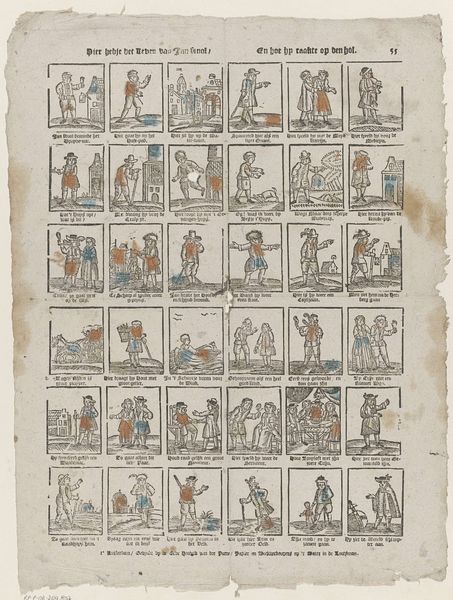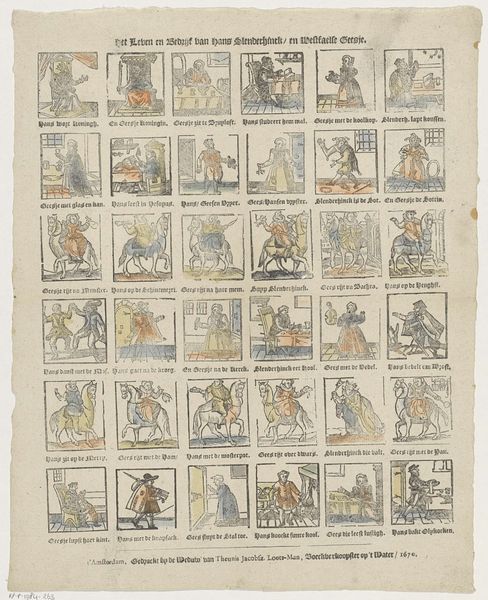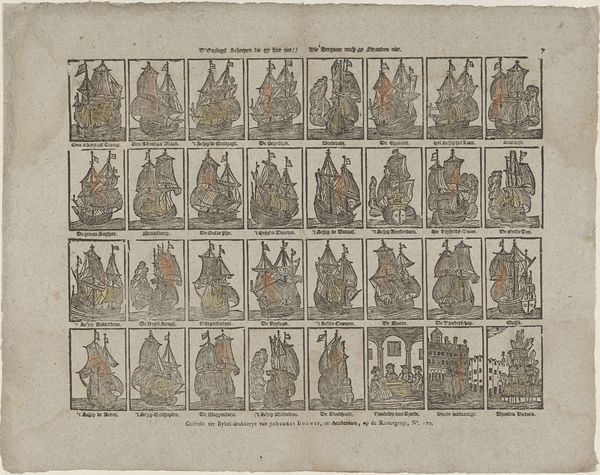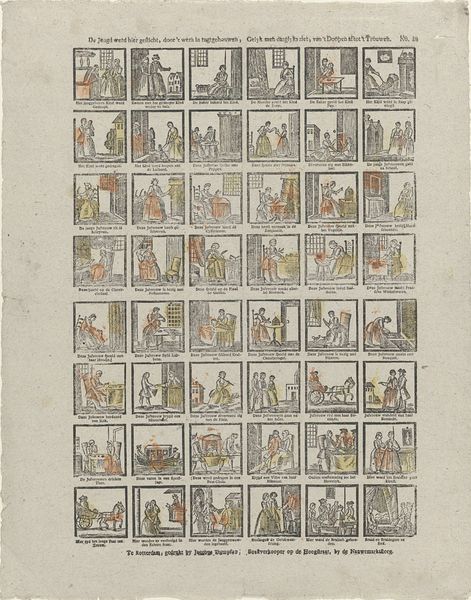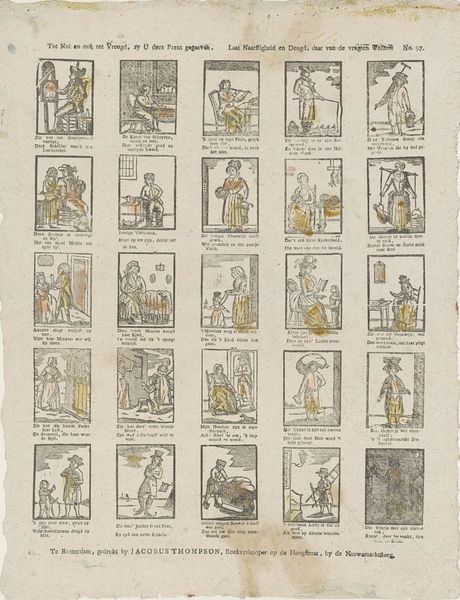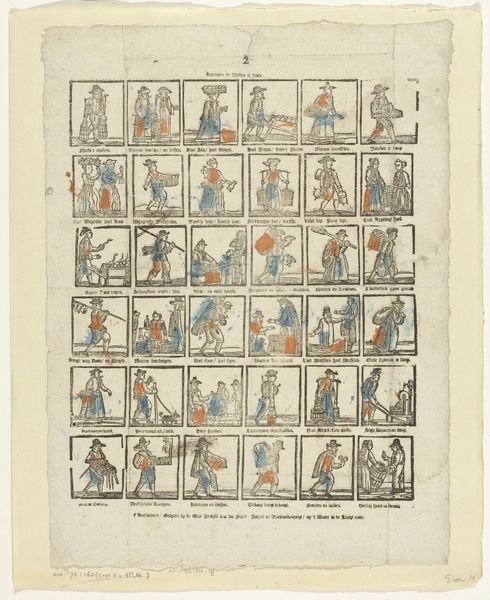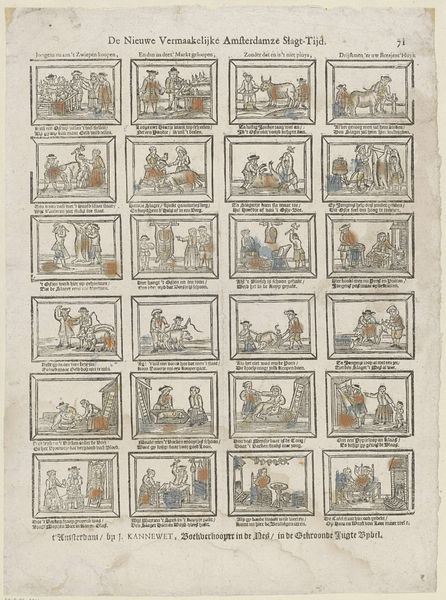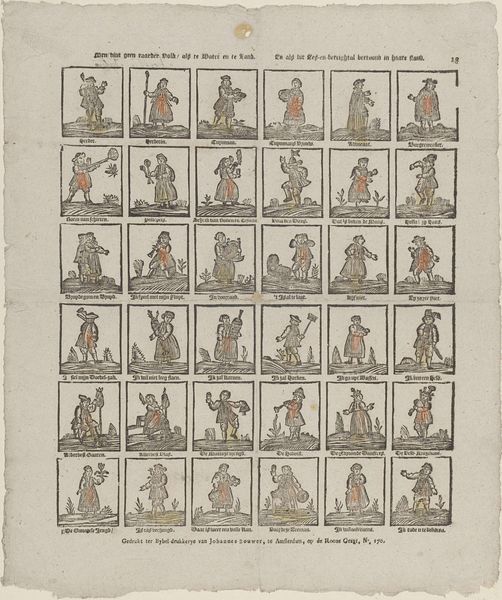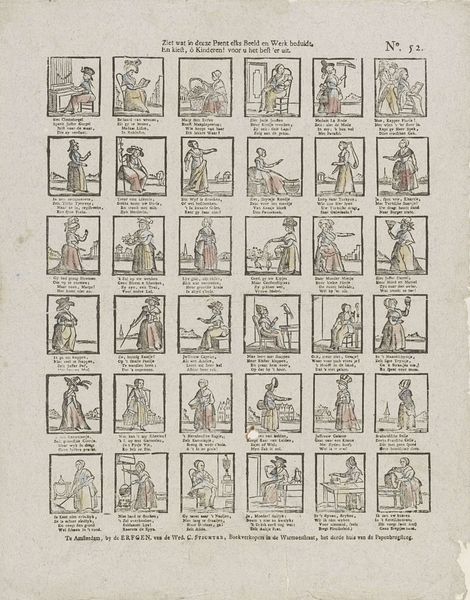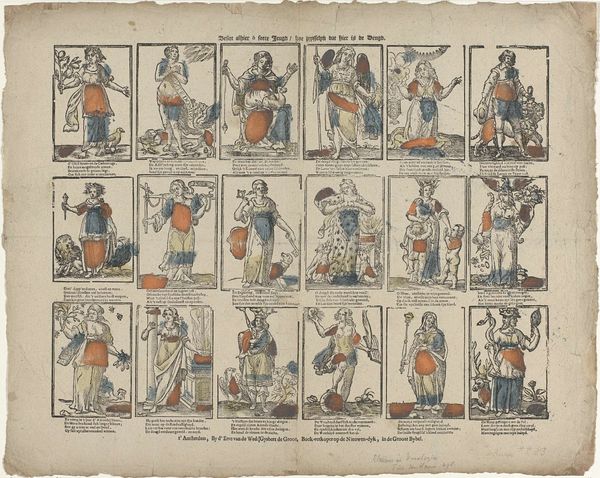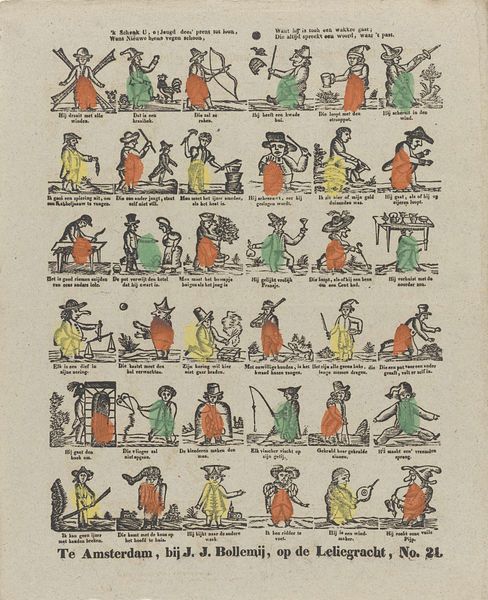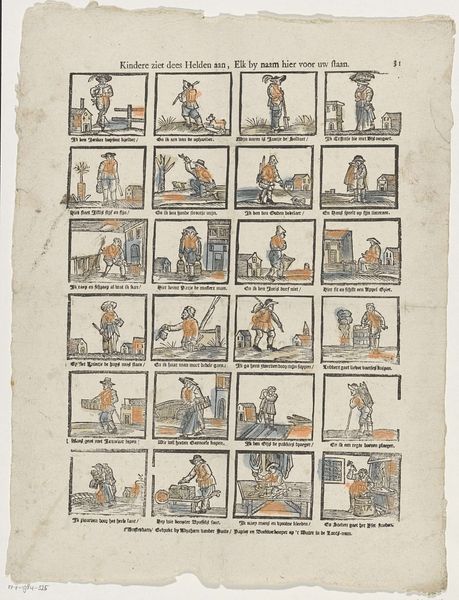
Komt hier gij jonge jeugd / hier is wat nieuws na u begeeren: / Veel spreuken en zinnebeelden kunt gy hier leeren 1725 - 1780
0:00
0:00
graphic-art, print, engraving
#
graphic-art
#
baroque
# print
#
genre-painting
#
engraving
Dimensions: height 307 mm, width 420 mm
Copyright: Rijks Museum: Open Domain
Curator: Look at this compelling piece titled "Komt hier gij jonge jeugd / hier is wat nieuws na u begeeren: / Veel spreuken en zinnebeelden kunt gy hier leeren," made sometime between 1725 and 1780 by Johannes Kannewet. Editor: It feels…fragmented, almost like a sheet of playing cards. I see archetypes depicted here, everyday scenarios perhaps, but simplified. What am I to make of these compartmentalized dramas? Curator: Each little vignette does present a scene ripe with allegory and societal commentary, capturing fragments of daily life from the period in which Kannewet was living and working. These "spreuken en zinnebeelden"— sayings and symbols — as the title states, aren’t just charming glimpses into the past, they are invitations to interpret the world, especially for "jonge jeugd," the young people. It's all a commentary directed at them. Editor: Ah, a didactic purpose! The arrangement echoes visual primers used in education. The scenes themselves reinforce common moral lessons— look at the contrasts, social hierarchy in how the classes interact, fashion as symbols of the time. Even in such miniature scale, these are weighty pronouncements reflecting baroque thought. Curator: Yes, consider this not only through art history but also pedagogical history. The print’s distribution allowed moral frameworks to permeate homes. It shows, subtly yet pointedly, expectations based on gender, class, even age...The use of imagery, while straightforward on the surface, serves a clear societal function in upholding certain power dynamics. Editor: I’m seeing recurring visual motifs. The prominence of certain costumes, gestures repeated. Consider this figure handing something to another. A cycle perhaps, of dependence or interrelation playing out within the whole print? It's hard to miss its narrative undertones, like frames from an unfolding parable. Curator: These images do more than mirror society; they reinforce structures already in place. The fact that they're contained, so neatly organized, suggests a controlled vision of how life *should* be, not necessarily how it is, and Kannewet had a point in sharing this vision. Editor: Kannewet as both observer and architect of his era, I'd say! I find these visual encryptions surprisingly potent after all these centuries, triggering connections with symbolic practices we *still* enact. Curator: It does underscore how symbolic systems are fundamental to social continuity. Thanks to pieces like this one, the Rijksmuseum preserves not just aesthetic form but these visual languages that define us. Editor: Exactly. By unlocking their emblematic intent we can reveal links to modern perspectives that constantly redefine inherited social norms.
Comments
No comments
Be the first to comment and join the conversation on the ultimate creative platform.
